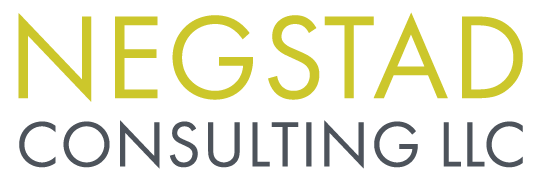5 Minutes on Preparing For A One-On-One Conversation
We’re continuing our journey of discussing one-on-one conversations. You can catch up on the last two blogs in the series here and here.
We’ve covered what can go right and wrong with a one-on-one conversation. And we’ve taken care of the nuts of bolts of what a one-on-one conversation is and why it’s important.
Now we’re going to talk about how to prepare for your conversation.
Like with many things, good preparation is going to set both of you, the supervisor and employee, up for success.
But Lisa, you might be saying, I’m busy! I barely have time to hold regular one-on-one conversations much less prepare for them!
I hear you. But not preparing for your one-on-one conversation is a missed opportunity.
A good one-on-one conversation is a place to give and receive feedback. It’s a time for learning and growth. It’s a time to celebrate together and give recognition.
A good one-on-one conversation feels natural and has a foundation of trust. But that takes preparation, so let’s not waste another minute.
How to prepare for a one-on-one conversation
I like to think of preparing for a one-on-one conversation in three areas:
Creating an agenda
Being mindful of the setting
Getting on the same page
Let’s dig in.
1. Creating the Agenda
An agenda gives the supervisor and the employee a preparation to-do list. It lets you know what you’ll talk about so you can prepare for those items. It’s also an opportunity to surface important high-level topics to add to the agenda.
Preparation can look like:
Reviewing goals or other items you’ve agreed on, like a specific project to report on or a topic from the last meeting.
Reflecting on areas of discussion. This could include: goals, teamwork, connection to organization, feedback, or other areas.
Gathering your questions and comments in notes or even a set form you’ve created to serve this purpose for each meeting.
Take note that I'm asking both parties to prepare.
One-on-one conversations are strongest when they are employee-driven. Not only should both parties prepare, but both parties should play a role in creating the to-do list and the agenda that shape the preparation.
The agenda is a reflection of your larger goals for the one-on-one meetings. Talk about those goals explicitly. Create the agenda together, talking about what is expressed by the agenda as you do.
For example, the agenda should include space for both parties to give and receive feedback. Talk about why that is important to each of you.
2. Being Mindful of the Setting
One frequently overlooked part of preparing for a one-on-one conversation is preparing the setting. The setting of your meeting impacts your frame of mind.
It can support or undermine your goals.
Here are some considerations for setting:
Limit technology distractions: Turn off your phone, meet away from your computer, use a pen and paper to take notes.
Ensure privacy: Make sure you can meet where you won’t be disturbed or worry about being overheard.
Get comfortable: Pick a location where you can imagine having a conversation with a friend. Get out from behind the desk and sit where you can both listen and focus.
These can all apply if you are meeting remotely. Close other screens on your computer that might distract you. Find a private space to talk and/or use headphones. Get comfortable!
Work together to find out what you both need to have the best conversation.
3. Getting on the Same Page
Getting on the same page is perhaps my most important advice about preparing for one-on-one conversations. We’re talking big picture here.
Review together what a one-on-one conversation is and why it’s important.
Talk about each of your overall goals. Do you want to increase trust? Build a stronger relationship? Build both of your skills for giving and receiving honest feedback?
Set aside one of your one-on-one conversations to plan for future conversations. It might sound like:
“I’ve been noticing that our one-on-one conversations are becoming really formal. Have you noticed that? What could we do differently?”
"I've been wondering, what's working well or not working about these check-ins?"
“I’ve realized that our conversations give me a chance to give you feedback but we haven’t built in a process for you to give me feedback. I’d like to change that. What could that look like going forward?”
“I think we could both be better prepared for our one-on-one conversations. I have some ideas for how we can do that and I'd like to hear what would help you.”
Remember, employee-driven is the goal.
Guess what? You are building trust by having any one of these conversations or something similar.
You are strengthening your relationship. You are setting an example for the kind of collaboration, trust, and conversation you want to have going forward.
I know that was a lot. So pause right now and jot down a few things you feel excited to try right away.
What caught your attention? What do you think would most improve your one-on-one conversations? How can you start to shift your conversations to being more employee-driven?

